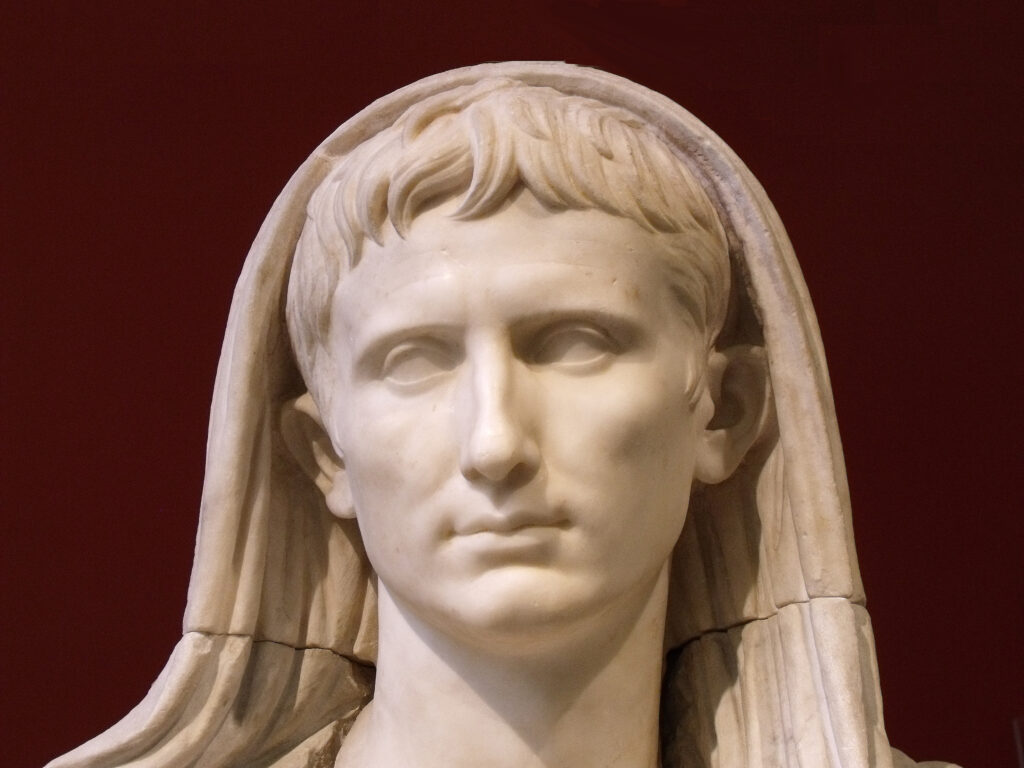
Augustus as Pontifex Maximus
Selected Correspondence of Ronald Syme
ANTHONY R. BIRLEY, THE SELECTED CORRESPONDENCE OF RONALD SYME 1927-1939, History of Classical Scholarship, 2020, Pp. 211, reviewed by Darrell Sutton
It is the opinion of many eminent classicists that Sir Ronald Syme (1903-1989) forged new pathways and would head any list of influential scholars of ancient Roman history. Indeed, the number of men and women following in his train continues to grow. Scholarship on the periods contiguous to Augustan Rome shifted during Syme’s Oxford tenure. Reactions to his work persist. Over the decades several academic journals have issued learned papers by authors who attempted to address the questions Syme posed, and his arguments and conclusions.
Equally adroit in Greek and Latin, at Trinity College Oxford, in his twenties, he was already a tutor in Greek and Roman history. Syme’s productive writing career began in 1928 and proceeded undiminished into his eighty-seventh year. Early pieces like ‘Rhine and Danube Legions under Domitian’ JRS (1928) and ‘The Argonautica of Valerius Flaccus’ CQ (1929) established his reputation. Midway through his career, his two-volume opus Tacitus (1958) showed his status as facile princeps among historians and his decidedly strict philological views. Prolific, his historical genius is captured fully in his compiled articles which appeared as Roman Papers I-VII (1979-1991). Numerous incomplete and unpublished literary projects were left behind when he died, many of them erudite studies that have since been published.
Students will now be able to access a few of the letters written to him during a thirteen-year period. Birley provides an Introduction of 22 pages in which he outlines his working relationship with Syme’s literary executor, Fergus Millar (1935-2019), and others, regarding his use of the contents of Syme’s archives. Several obituaries contained factual errors about Syme. Pages 27-28, ‘Some Corrections’, list a few particulars. The ‘Letters’ extend from pages 34-169. A ‘Postscripts’ section, plus ‘Appendices’ (pp.171-202) and ‘A List of Individuals Named in Syme’s Respective Notes’ are terminated by ‘A List of Letters Included’ (pp.203-211).
Birley acknowledges that ‘The selection here concentrates for the most part on academic correspondence from the years before the outbreak of the Second World War on 3rd September 1939, followed four days later by the publication of The Roman Revolution’. (pp.2-3). Students will learn that Syme was engaged to be married to one Dr. Vera Reader. The engagement was announced in a newspaper. But as Birley tersely observes, “the marriage never took place” (p.4). After that emotional period, he soon regained his composure.[i] His ambition had not waned, and his research now occupied his mind. Moreover, Syme, being an international traveler, was on the go and in high demand. The direct inspection of localities and material remains augmented his historical perspectives. And his interest in archaeology and topography added an exactitude to his writings that was absent from the monographs of other historians of ancient Rome.
The selected letters appear in English, German, French and Italian. The scholars with whom he corresponded were reputable. For the most part, the communications are brief. The primary benefit to be derived from this correspondence is learning those persons who were pivotal in Syme’s early career. Before Syme’s relationship with Hugh Last broke down, Last (1894-1957) was supportive of him. And M.N. Tod’s (1878-1974) scholarship indirectly aided Syme, along with his insider machinations to secure Syme, a student with a “brilliant record”, a Fellowship (p.49). There is little information concerning his personal life; but there are a few letters from Syme: one from the summer of 1928, written by him in German, in which he tells Ernst Fabricius, Professor of Ancient History in Freiburg, that, having examined some material casts he thought were worthy of notice, he had “finally mustered the nerve to write to him in German language” (p.45).
Syme’s indebtedness to Teutonic scholarship was great. He stated as much to Fabricius in another letter (p.65). He examined Tacitus de Vita Iulii Agricolae and de Germania but did not believe that its author, Alfred Gudeman (1862-1942), was much of a historian (p.67). Offprints of his were sent to friends; requests came from German colleagues who needed help as Nazism grew stronger. In earlier years, Hugh Last was helpful on this front too. Syme, like Last, possessed a remarkably clear mind when reading and commenting critically on the work of colleagues (pp.94-95). The letters to Syme are educational. Factors surrounding some of Syme’s articles that were circulated in the 1930s are clarified.
Isobel Henderson’s 1934 belief that “There are no real Romanists in Spain” (p.78) is hard to resist. Overall, the epistolists lack the literary skill that one finds in the letters of Thomas B. Macaulay or Isaiah Berlin. Among the postscripts are many felicitations concerning his recently published volume, The Roman Revolution (1939). The footnotes are thorough. The letters will fascinate antiquarians, classicists, and historians. Hopefully, a larger collection of Syme’s correspondence will be forthcoming. This online resource is an excellent reference work.
Misprints: J.W. Burgon published his article in The Quarterly Review, vol. 149 in “1880”, rather than “1980” as noted on page 192; and Eduard Fraenkel was born in “1888”, not in “1880” as it states on page 204.
[i] In an article in History Today (vol.69 June 2019), entitled ‘From Russia with Love’, Jessie Childs reminisces about Syme and his connections to her grandmother Lara, saying: “I’ve been thinking about him because he was my grandmother’s lover.” Letters in the Bodleian Library from Lara to Syme disclose the nature of their relationship.
Darrell Sutton lives on the Kansas/Nebraska border and is a regular contributor to QR










